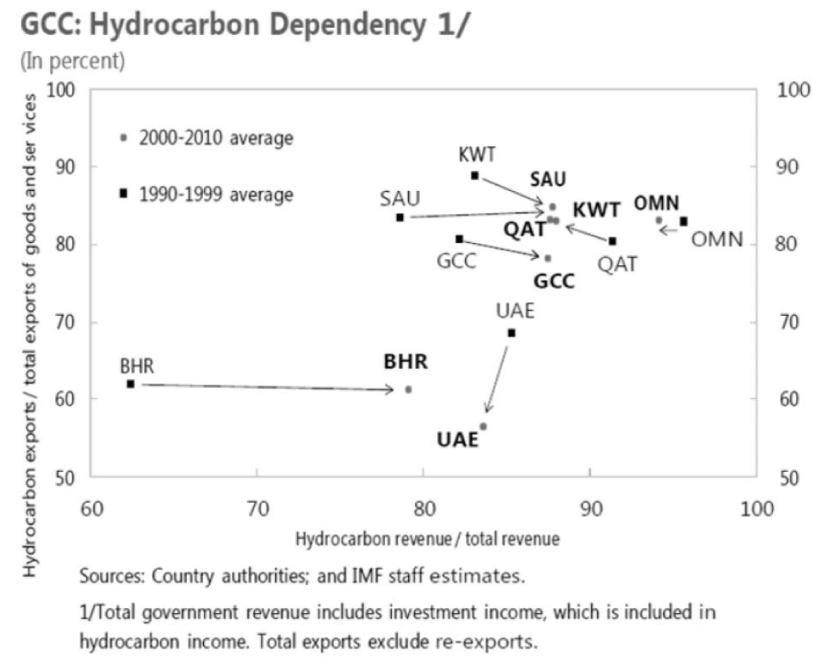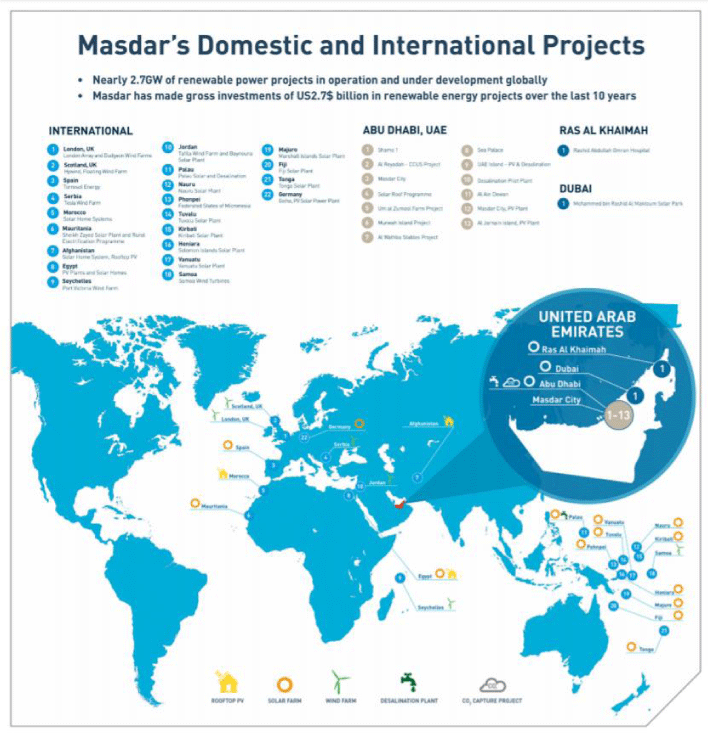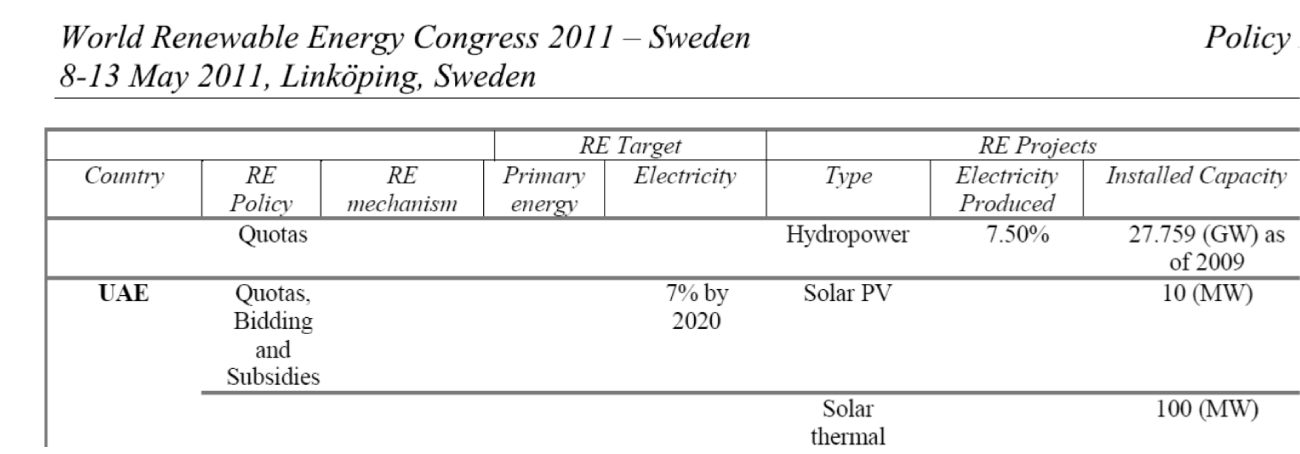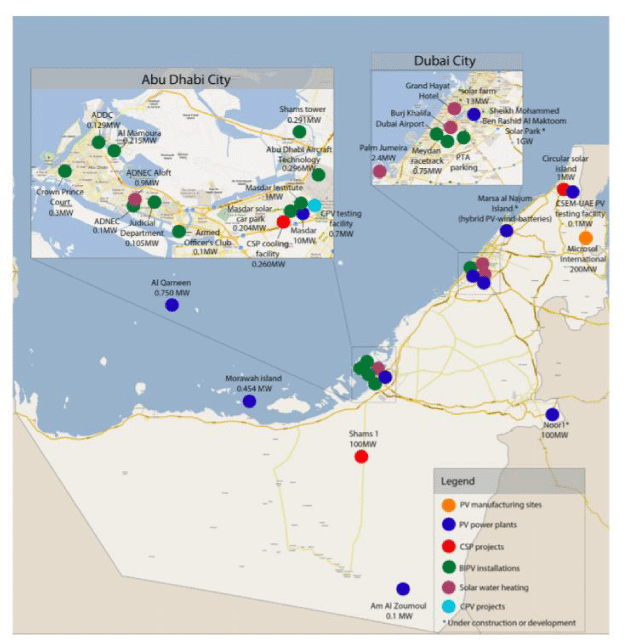Journal of Civil Engineering and Environmental Sciences
Should National Environmental Policy focus on developing more oil resources or developing renewable energy sources?
Utpal Kumar Nandy1, Shravani Nandy2 and Antara Nandy3*
2Director, B U Builders & Consultants Pvt. Ltd, Nilanjan, D1/114, Sector-IV, Vinay Nagar, Gwalior, MP, 474012, India
3Ph.D Candidate in Vedic Vastu, Shri Maharishi College of Vedic Astrology, 306, Arihant Plaza, Udaipole, Udaipur-313001, Rajasthan, India
Cite this as
Kumar NU, Shravani N, Antara N (2018) Should National Environmental Policy focus on developing more oil resources or developing renewable energy sources? J Civil Eng Environ Sci 4(1): 006-008. DOI: 10.17352/2455-488X.000019United Arab Emirates (UAE) is a nation which is gifted with abundant reserves of oil and natural gas, thus occupying seventh position in the world. Because of its vast reserves, the oil sector plays a pivotal role in running the economic system of nation. Though the country has been making steady progress in other industries such as real estate, tourism, aviation etc. the oil industry holds the key role in its sustenance and development. However, at the same time the world is threatened by the rapidly depleting natural resources like coal and petroleum. While on the other hand their demand is on a sharp rise, due to the constantly growing population and their needs. The capital city of UAE, Abu Dhabi too is witnessing a steeply rising population level due to several factors like immigration of expatriates. With the growth in population, the pressure on the available resources is increasing exponentially.
Besides this, the UAE has the largest carbon-foot-print in the world. Thus, it is essential to develop the renewable energy resources simultaneously, which will help to conserve the natural resources apart from supporting the economy and enhancing the energy security of the country. The paper attempts to journey through certain prominent measures taken by UAE in this direction and their respective consequences [1].
Introduction
Owing to its bountiful oil-reserves, the United Arab Emirate (UAE) is one of the world’s wealthiest nations, with a GDP per capita estimated at around $48,158. According to the Oil & Gas Journal 2012 estimates, the United Arab Emirates is the seventh-largest oil-rich nation with proved reserves of crude oil (97.8 billion barrels). UAE alone holds 7 percent of the world’s total crude-oil reserves. Majority of reserves (approximately 94 percent) are located in Abu Dhabi. Oil-rich Abu Dhabi is on a strong growth trajectory and its strong economic position is likely to continue in future [2].
In the UAE, energy demand is on an exponential rise due to the population and economic growth. Moreover, the fast depletion of its primary energy generation resource i.e. fossil fuel emphasizes the need to look for alternatives (Figure 1).
UAE has one of the highest carbon foot-print in the world which has become a major issue demanding immediate attention.
Renewable energy will supplement the energy needs of the nation and reduce its over-dependency on the conventional sources of energy. It will also help to safeguard its energy security concerns.
Solar and wind power generation boasts of a promising alternative in the UAE and especially in Abu Dhabi
Power generation through harnessing of solar and wind energy has commenced in the form of a 10-MW Photo-Voltaic solar plant which is operating and supplying power to the Masdar City and is connected to the existing Grid. Abu Dhabi, therefore with its Masdar Initiative, is regarded as a pioneer in its efforts to promote Renewable Energy in the Middle East region especially in Gulf States sharing similar characteristics like abundant oil reserves and solar resources [1] (Figure 2).
Literature review
An extensive study has been carried out on the economic standing, effect on GDP and its growth rate in the last few years in the UAE comprising of the seven Emirates which includes Abu Dhabi, Ajman, Al Fujayrah, Dubai, Ras al Khaymah, Sharjah, and Umm al Qaywayn. With the help of the data collected by the Energy Administration Systems, an attempt has been made to research, understand and evaluate the strengths and needs of the country. There were many policies of ample significance that were framed in the World Renewable Energy Congress held in Sweden in the year 2011. It has helped to understand the availability of renewable energy resources in the UAE. The projects implemented in the later years clearly support the rising trends in renewable energy generation practices in UAE.
Methodology
A comparative analysis of the energy generation technologies of oil and renewable energy resources has been conducted to determine their potential, merits and scope of both the resources at present and also in future. The standing of UAE in terms of its oil reserves, GDP, environment impact assessment, alternate sources of energy has been researched upon. Further, study has been carried out to gather information on the recent developments in the oil sector, its economic impact as well the potential resources that can act as significant sources of energy generation and boost the economy. Finally, with the help of the available data and the needs it has been attempted to draw a conclusion which would incorporate and build upon all the available acts and suggest a logical solution.
Main body findings
After having attained Independence in the year 1971, the vast available reserves of hydrocarbon endowment has been the backbone of the economic structure of the United Arab Emirates.
In a new report by Isthmus Partners ‘Abu Dhabi Investment Environment’, it has stated that based on current utilization rates and no additional discoveries, Abu Dhabi’s oil reserves will last for 150 years. The oil exports generate significant income for the emirate. With a GDP of Dh520bn in 2008, the emirate as an economy stands strong. Yet, Abu Dhabi the capital of UAE, is one of the most concentrated economies in the GCC, as the oil sector dominates economic output and any major fluctuations in oil price can directly impact it [3].
Abu Dhabi has traditionally invested a considerable amount of its oil revenues abroad and such international investments provide financial support to the nation. The recent economic growth of Abu Dhabi followed by immigration of expatriates is one of the significant factors that have led to the rapid increase in population. According to a current research, the resident population in Abu Dhabi has an average compounded annual growth rate (CAGR) of 4.6% between 2001 and 2006. This rose to a value of 6-7% between the years 2005 and 2008. Hence the demand and thereby the pressure on the resources has reached alarming measures [3].
Furthermore, as the world is hit by the climate change and fossil fuel depletion it becomes imperative to develop certain alternative energy choices. Renewable energy is a preferred option to reduce carbon dioxide and other pollutant emissions that contribute to the greenhouse effect. However, the high initial cost of renewable energy technologies is the main obstacle opposing the adoption and hence commercial production of renewable energy power generation, thereby calling for an economical and political assistance. The measures that can be helpful include providing, guidelines for energy conservation, legislation, incentives for investors, energy generation targets, strategies to stimulate the energy industry, and taxation policies.
In 2008, the UAE government issued a policy to promote renewable energy in the state. It was stated that at least seven percent of the emirate’s power generation capacity will come from renewable energy sources by 2020. Thus this policy provided a critical missing piece of the UAE‘s overall strategy in energy and sustainability (Figure 3).
Masdar inaugurated the project Shams 1 in March 213 which has grown up to become one of the world’s largest Concentrated Solar Power (CSP) plants and the first of its kind in the Middle East & North Africa (MENA) region. Its capacity of this solar thermal project is around 100-megawatt (MW). Masdar has joined hands with Total and Abengoa to realize this mission [1].
By January 2016, Masdar reserved 80% share by purchasing Abengoa’s 20% stake in the asset [1].
Masdar clubs the clean energy generated on site through the 10MW solar power plant and along with the 1MW rooftop solar panels installed on the Masdar Institute buildings which is primarily supplying the national grid. The total energy generated totals up to approximately 19,100MWh’s of electricity annually, displacing 11,450 tonnes of carbon emissions each year. This much amount of energy is capable enough to fulfil the energy needs of 500 homes in the UAE for an entire year [1]. (Figure 4) The solar installations map for the UAE [4].
However, there are no additional legislations or mechanisms to promote power generation. The policy target of 7% share of renewable energy in electricity generation by 2020 set by the UAE (Abu Dhabi) government can be achieved by implementing strategies such as feed-in tariffs, renewable portfolio standards (RPS), capital subsidies or grants, investment tax credits, sales tax or VAT exemptions. In addition other incentives that are of significance include the green certificate trading, direct energy production payments or tax credits, net metering, direct public investment or financing and public competitive bidding.
Conclusion
Oil resources have been the major source of revenue generation in the UAE. It is because of this very fact itself that UAE can be considered amongst the richest nations of the world in terms of its GDP. There are still substantial reserves of oil in the UAE that can be used both by the nation as well as can be exported for years to come.
However, the ever increasing population, rapid consumption of energy resources and the high carbon-foot-print of the nation have become causes of concern in the recent past. While the present quantity and the sustainability of oil reserves in the UAE seem promising, the fact that it’s a conventional natural resource makes it crucial to search for ways of conserving it. The best way would be to develop alternate energy sources by utilizing solar and wind energies to generate power. The emphasis has to be on developing the renewable energy sources simultaneously with the further development of the oil sector. The likelihood of further major discoveries of oil reserves in the UAE is low, but enhanced oil recovery (EOR) techniques are being successfully utilized to increase the extraction rates of the UAE’s mature oil fields. Along with this, the development and successful implementation of renewable energy resources will stabilize the system and promote its holistic growth.
- (2017) Masdar Clean Energy Link: https://goo.gl/7SQhwq
- Kapur S (2010) Abu Dhabi's oil reserves to last another 150 years. Link: https://goo.gl/5LWLFF
- "eia U.S. Energy Information System" (2012) United Arab Emirates. (Image 1). Link: https://goo.gl/ocBNCb
- A Mokri, Ali MA, Emziane M (2013) Solar energy in the United Arab Emirates: A review. Renewable and Sustainable Energy Reviews 28: 340-375. Link: https://goo.gl/4xKww7
- Beck F, Martinot E (2004) Renewable Energy Policies and Barriers. Encyclopedia of Energy 5: 365-383. Link: https://goo.gl/C0Sv
- International Energy Agency (IEA). Statistics. Renewables (2010). Link: https://goo.gl/i7c245
- Mezher T, Dawelbait G, Abbas Z (2011) Renewable energy policies implementation drivers and barriers for Abu Dhabi. Link: https://goo.gl/aQFdtb
- Saidur R, Islam MR, Rahim NA, Solangi KH (2010) A review on global wind energy policy. Renewable and Sustainable Energy Reviews 14: 1744-1762. Link: https://goo.gl/WPQ6RX
Article Alerts
Subscribe to our articles alerts and stay tuned.
 This work is licensed under a Creative Commons Attribution 4.0 International License.
This work is licensed under a Creative Commons Attribution 4.0 International License.





 Save to Mendeley
Save to Mendeley
